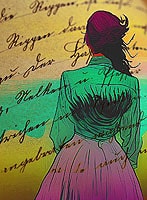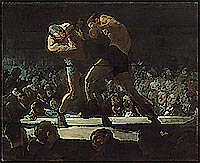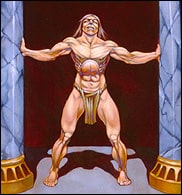Tecumseh had two great Shawnee nemesis’: Chief Cornstalk and Black Hoof. Depictions of both of these men survive, sketch portraits in fact, as well as a portrait of Tecumseh from the memory and hand of a Frenchman who new him.
All three chiefs, the unsanctioned war chief who gathered an alliance against what he regarded as a Great Satan, America, and the two elder chiefs who were bought and paid for by the English and then Americans, had these similar traits: straight angular, and very gracile European nose, hair cut to the base of the neck and worn loose against Shawnee convention, heads bound in turbans, with Tecumseh’s more elaborate and bearing an ostrich feather, with the civic chiefs wearing a more simple wide headband. These three men do not look like the surviving depictions of warriors with their plucked scalps and general heavy European working class features.
Tecumseh regarded the British King George III as his “Father,” in a social sense. All three of these men are obviously, as depicted in their lifetimes by artists who knew them, 75% European and 25% Amerindian in phenotype and in dress. The genetic heritage of the mother [Methoataaskee] and father [ Pukineshinwau] of Tecumseh is unknown.
However, Tecumseh had at least one adopted “white” brother and numerous fellow tribesmen of Euro-American parentage. Additionally, since 1610, it was practice for French traders to marry the daughter of the leading chief of each tribe they resided with. Tecumseh also did this, having a Cherokee wife when he and his brother lived among them. Indeed, he had at least three wives. The illustration of his one surviving son, made in his life, Paukeesau, is entirely European in complexion with a mix of native jaw and European upper face, whose mother was Mamate, a Shawnee woman, who apparently was lighter skinned than the swarthy Tecumseh.
The portrait of Paukeesau is on page 63 of Shooting Star, Crouching Panther by Jim Poling Sr.
From the 1630s through the 1660s, the Iroquois, with English backing, committed numerous genocides and largely depopulated the Upper Ohio Watershed, in the area of Pittsburgh, Pennsylvania west to about Columbus, from Lake Erie south to the Potomac River. The Erie, or Raccoons, for whom Lake Erie was named, as well as a tribe known as the Big Waters and also the Allegheny, or “Beautiful-people,” were entirely rubbed out.
The Shawnee moved south and west and north, and a hundred years later attempted to repopulate the Ohio [Good-river] Country in the lifetimes of Tecumseh and his Father, both of them, and the eldest brother, Cheeseekau, dying in combat holding back the invaders.
Despite Tecumseh’s French appearance, his brother, The Prophet, depicted in two portraits from life, appears to be ethnically European, but more Scottish. Like the other Shawnee leaders, he dresses in European style, including a feathered turban, also affected by Creek Nation leaders, as well as vestigial pieces of obsolete European armor, such as a gorget [favored by many tribal leaders] and even a breast plate.
In Tecumseh life time, numerous American women were abducted as wives and lived faithfully with their husbands, possibly to include his third wife, Wabeleguneua, or White Wing. The European genetic input for Eastern Woodland tribes of the Ohio Valley are from most to least prominent:
Husbands
-French explorers, agents, traders
-Scottish traders
-English officers and agents, like Thomas Gist
-Scottish/English/Dutch/Irish runaways and abductees like Blue Jacket, Stephen Ruddell and Richard Sparks
-German traders
-Negro freemen and runaways, accounting in eastern Maryland for the term “redbone’ for a light skinned person of African ancestry
Wives
-Abducted frontier women
-The daughters of French explorers and indigenous women who were valued highly as translators
Since mixed breeds were likely to be the children of European men of high standing as well as of tribal chiefs, it is natural that a higher proportion of chiefs would be mixed race than among the common warriors. But, by the 1770s, demographic impact had been so severe from battling more numerous invaders, that a concerted effort to abduct replacements made racially mixed tribesmen increasingly European in appearance.
Do note that it was taboo for Shawnee men, as well as most Eastern Woodland tribes, to wear their hair long as did their women and the men of the western tribes.
The following period depictions of allies and relations of Tecumseh comes from the book:
Tecumseh and the Prophet: Two Shawnee Brothers Who Defied a Nation, Peter Cozens, 2020, NY
The above noted likeness of Black Hoof is in this book as it has been in others.
Also, on page 184, is a painting in color, of an Indian delegation to General Grosner Prevost Drummond
On the far right is a very light skinned Indian woman turning away, weeping.
Next is a bold red Indian warrior, with plucked and dressed scalp lock.
Next is a Negro with bunny ear wool. This negro and the next two in the illustration, from a Great Lakes Area meeting, were wearing blue military clothing, had dark brown skin and black kinky wool.
To the left of these men are two light skinned women, the same skin tone as representing so-called “white” people in period art, with straight black to brown hair, parted down the middle. These women, would not, like The Bride of Solomon, have to apologize for having a tan. The second figure from the left is recognized as Tecumapease, the camp matron or female chief in charge of moving and maintaining noncombatants and their goods.
As a civic chief, in times of war, Black Hoof would have had no more power than this woman. But, as the tribe split under American pressure, Black Hoof turned traitor and encouraged warriors to fight on the winning side against their own doomed cause.
Looking at the above mentioned illustrations from the period under question, there can be no racial case made for these Indian Wars. These were culture wars between tribalism and mercantilism, barbarism versus civilization.
Ethan Allen had made the case in his narrative, that the tribes must be defeated by cutting off their source of Modern supplies so that their stone age economy could be targeted directly. The following two sections of this inquiry will focus on the figures of Tecumseh and his brother The Prophet, their successes and failures as reflections of actual working class, frontier conditions in Plantation America.











